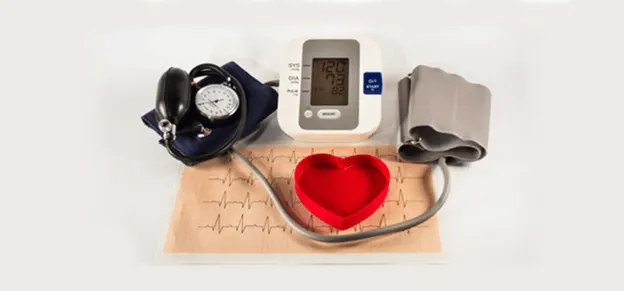Aortic stenosis is a prevailing cardiovascular disease hitting people over 60 years old. It is a long-term condition, as it aggravates year by year, peaking in retirement. Let’s explore what it is, and what the ways of treatment are.
Aortic Stenosis: Understanding Causes, Symptoms, and Treatment Options

What Is Aortic Stenosis?
The aortic valve controls the blood flow from the left side of the heart to the rest of the body. It is located between the left ventricle (left chamber) and the aorta. With every heart contraction, the aortic valve opens, and oxygen-enriched blood flows from the left ventricle to the aorta.
In normal conditions, the valve performs its functions, providing us with oxygen and maintaining our life. Yet, due to the aortic stenosis and its degenerative changes, its opening narrows and thickens, restricting the blood flow to the aorta. In such a deteriorating state, the heart’s workload increases, which leads to high blood pressure and even heart failure. Therefore, timely diagnostic and aortic stenosis treatment is the key to healthy living.
Common causes of aortic stenosis;
- Age – aortic stenosis usually targets people who are over 60 as the heart valves get stiffer because of calcium deposits.
- Congenital valve abnormalities – a rare cause of aortic stenosis, when people are born with abnormalities of the aortic valve, which leads to its faster deterioration.
- Rheumatic heart disease – the condition caused by rheumatic fever, which causes scars to the valve and, thus, its further narrowing.
Apart from major reasons, there are also risk factors like smoking, diabetes, high blood pressure, kidney diseases, and high cholesterol. Although they don’t directly impact arctic stenosis development, they worsen the overall body condition.
Symptoms of Aortic Stenosis
Aortic stenosis doesn’t develop overnight but gradually over many years unless it’s an inborn abnormality diagnosed in the teenage years. Symptoms, however, may appear suddenly, especially during physical activity:
- Chest pain, or the feeling of tightness
- Coughing when lying in a horizontal position
- Feeling short of breath
- Palpitations (fluttering, racing, thumping, or pounding feeling in the chest)
- Dizziness
- Constant loss of appetite and weight
- Visual problems
Not all the symptoms are bound to appear at the same time, yet they are the red flags to be aware of.
How to Diagnose Aortic Stenosis?
Physical examination
Physical examination is the first stage to diagnose aortic stenosis. While listening to the heart with a stethoscope, the doctor may clearly hear a heart murmur – a unique sound that is heard when the blood flows across a heart valve or blood vessel. It is loud enough to be detected with the stethoscope.
Diagnostic testing
There is a multitude of tests, each one complementing the diagnosis:
- Chest X-ray – shows if the heart is enlarged and if there are deposits of calcium in the valve.
- Electrocardiogram ECG – monitors the heart rate and detects the abnormal rhythms. It also helps to define if the left ventricle is enlarged.
- Ultrasound scan – assesses how well the aortic valve and left chamber are working.
- CT/MRI – shows the size of the aorta and the size of the narrowing.
- Coronary angiogram – the most profound testing. The catheter is inserted into the artery and taken straight to the heart. Then, a special dye is injected into the catheter, and an X-ray is taken to see how it is pumped by the heart through the bloodways.
- Stress tests – the patient performs an activity (walking, or cycling) while the monitors track the heartbeat.
How to Treat Aortic Stenosis?
The treatment of aortic stenosis is defined by its stage and complexity:
- Lifestyle changes
The first step towards improvement – the change of a lifestyle. It is important to be physically active, follow the guidelines of a healthy diet and quit on smoking (if it’s the case). The body needs strength to maintain a stable condition.
- Observation
Once the stenosis is detected, the patient should regularly visit the doctor to monitor all the changes.
- Surgery
In severe cases of aortic stenosis, surgery is the only way to save the heart and life of the patient. The most common procedures are:
- Aortic valve replacement is used when the valve is too managed. It can be done with an artificial valve or tissue valve (usually made from pig or cow tissue or sometimes from human tissue).
- Transcatheter aortic valve implantation is less invasive than the replacement. A new valve is inserted inside the damaged valve.
- Balloon valvuloplasty is a stretching procedure to improve the blood flow into the aorta. It is usually a temporary measure to ease the symptoms, yet, when it worsens, the patient will need surgery.
The Final Thoughts
Aortic stenosis is a life-threatening condition, which usually occurs in the advanced ages. It’s the result of calcification of the aortic valve, which narrows the blood ways and oxygen provision to the body.
Aortic stenosis can be defined with a series of tests and cured with a respective treatment. The main advice is to be vigilant, and take care of your physical strength.

Jessi is the creative mind behind The Coffee Mom, a popular blog that combines parenting advice, travel tips, and a love for all things Disney. As a trusted Disney influencer and passionate storyteller, Jessi’s authentic insights and relatable content resonate with readers worldwide.
